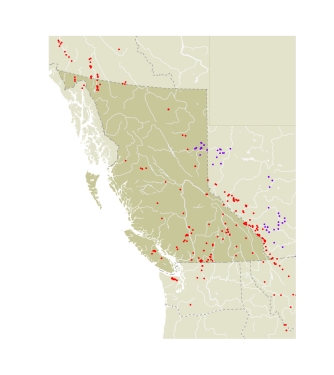The name Agriades most likely means "like argus," another European blue. The original Argus, from the myth of Zeus and Io, had 100 eyes, a reference to the many spots on the underside of the wings (Emmet 1991).
The major structural differences that have defined this genus are the falces and labides of the male genitalia. The falces is elongate and extends to just beyond the labides. In this characteristic, the genus is closest to Lycaeides and Vacciniina, and all three are far removed from lcaricia and Plebejus.
The genus Agriades has four species: one Palearctic, one Holarctic, and two Nearctic species restricted to California and southwestern Oregon. Emmel and Emmel (1998) clearly define two Californian species, but they do not clearly show that other taxa are not all A. glandon. Both European and North American authorities have tried to recognize more than one species within the species A. glandon, but so far no conclusive evidence has been published.
|
|
